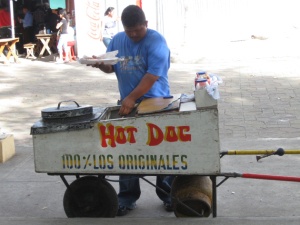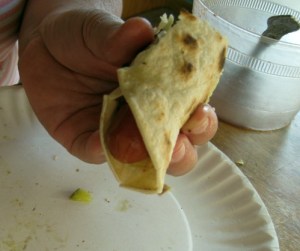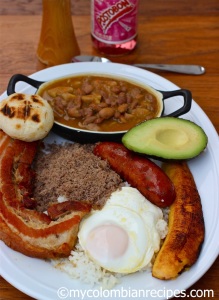TROPICAL CHICKEN PICKEN AUTHENTIC PR FOOD IN THE TRIANGLE!
SEE THE VIDEO!
When Ilia Scrivano retired to Raleigh from Long Island with her husband Franchesco 5 years ago she thought she’d never see another authentic Puerto Rican restaurant again. “I thought I’d have to travel back to Long Island to get authentic Puerto Rican food again. I couldn’t believe I’d be able to get it here. This is just a blessing”, said Scrivano.
When Ilia Scrivano retired to Raleigh from Long Island with her husband Franchesco 5 years ago she thought she’d never see another authentic Puerto Rican restaurant again. “I thought I’d have to travel back to Long Island to get authentic Puerto Rican food again. I couldn’t believe I’d be able to get it here. This is just a blessing”, said Scrivano.
Scrivano was eating Puerto Rican chicken soup when I caught up with her at the Tropical Picken Chicken in Wake Forest, North Carolina. She says what may be better than the food, is the service she gets from owner Randy Hernandez and his entire staff. “It feels like home and the food is so authentic,” said Scrivano, who is a mean cook herself, according to her husband.
Hernandez who also owns Latin Quarters in Raleigh, opened the restaurant 3 years in Wake Forest. A tiny town just outside of the thriving Raleigh metro area. Many people thought the restaurant would not work in such a small town. “In the beginning it was tough because no one new where we were at. But this is a great location. In the beginning people thought we were in the middle of nowhere. But the Wake Forest Community and the Wakefield Community and Raleigh has really supported us. People come from all over the place to eat here.
Loyal supporters, not only include the Scrivanos but a gentlemen whose first name is Pa. I never caught his last name. Pa has eaten at the restaurant almost everyday for the past year according to Hernandez. I never got a chance to interview Pa. He seemed into his food so I didn’t want to bug him. Man…I wish I would have asked what he thought of the food! Before I knew his story…Pa was gone.
“We are unique, no one else has this kind of food and we’re very personal with our customers. It’s like coming in Abuelita’s (Grandma’s) house. Pa is one of our greatest supporters, he’s always here. He comes to the other restaurant (Latin Quarters). He’s constantly bringing new customers in. It’s good to have that kind of customer and constantly shouting us out,” said Hernandez.
The small restaurant has a big city feel. Perhaps that’s because Hernandez, a Nueva Rican has decorated the restaurant with New York Yankees pictures and a variety of Puerto Rico memorabilia. Hernandez says what makes his restaurant great is the variety of people and the taste of the food.
“What makes this place special is we are the only Puerto Rican Restaurant in Wake Forest and we have a great Mix of Latinos working here, we have Puerto Ricans, Mexicans, Colombians, Cubans and we cook from our hearts,”said Hernandez.
Hernandez showed me what was cooking inside Tropical Picken Chicken kitchen. Today’s special: the Jerk Chicken with 2 sides and a drink for just 6.95. For me, Hernandez cooked up some Pollo Guisada with black beans and rice, a traditional Puerto Rican recipe. Hernandez also showed me why his rotisserie chicken is so good without giving away his secrets. “What happens is we season this chicken in our herbs and spices but I’m telling you what,” said Hernandez with a smile. “After we season it for 3 days we let it marinate then we slowly cook it on the grill for an hour and half. When it’s time to serve, we cut and put it into our seasoning again,” said Hernandez.
If the food wasn’t enough, Hernandez brought out some new deserts on the menu you that are absolutely delicious. “This is a new desert called Flan Cocho, flan on the top with chocolate cake on the bottom. Then this is Flan de Coco.This is Flan de Queso…flan with cheese. This is Coquito…kind of like a Puerto Rican egg nog,” said Hernandez.
Hernandez is planning on opening his third restaurant in Raleigh called El Jefe Latin Street Food in January. The restaurant is just off Wake Forest and Six Forks Road. “We are planning to take the best that we have here and the best that we have from Latin Quarters and create another store but it’s pretty much just street food,” said Hernandez.
As for Ilia Scrivano she says she’ll follow Hernandez to wherever he goes but for now coming to Tropical Picken Chicken is like coming home. “When I was a little girl we would go to my Grandmother’s house every Sunday. There were 9 brothers and sisters and we would all gather at my Grandmother’s house and I remember all my Aunts in the kitchen. I remember who’s cutting what. And everything was prepared. And my Grandmother expected us every Sunday. When I come here it’s like being in that kitchen again,” said Scrivano.
And it’s that feeling of home that keeps loyal customers coming through Tropical Chicken’s doors.









